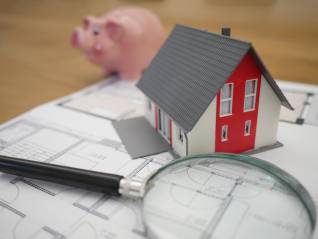How are you financing your next rehab?

The housing market is hot, and Chicago real estate is no exception! Flipping property is a great option for real estate investors who are looking to generate short term capital to possibly invest in longer term buy and hold projects. But what if you don’t have much cash on hand?
While cash is king in the world of flipping real estate, there are plenty of other options available for your next rehab project. Keep reading to learn about some of the top creative financing options.
Hard Money Loan
If you’ve got a few flips under your belt, a hard money loan, also known as a fix and flip loan, is a great option. This type of loan is also ideal for investors who have bad credit, as well as those who are unable to qualify for a conventional loan.
A hard money loan involves getting funds from non-bank lenders, such as an online lender or an individual. This type of financing has less eligibility requirements, but it does come with higher interest rates and shorter repayment terms.
Cash Out Refinance Loan
Do you currently own a home with some equity? If so, you’re in luck. A cash out refinance loan is when you refinance an existing property to fund the purchase of a rehab property. Funds can also be used to cover the costs of renovation.
However, this financing option only works if you have a good amount of equity in your home. Ideally you want to have no less than 30%, but the higher the better.
It’s also important to have the project ready since you would be required to start paying the interest on the loan immediately.
Home Equity Line of Credit (HELOC)
Another option for homeowners who need funds to flip a property is a home equity line of credit (HELOC). A HELOC is based on the equity that you have in your home and the funding is secured by the property. The awesome part about a HELOC is you do not pay interest on undrawn funds, so you have cash on hand when needed.
If you have at least 20% equity in your home, most lenders will allow you to borrow up to 85% of that equity.
For instance, if your home is worth $500,000 and you owe $350,000, you have $150,000 in equity. With a HELOC, you can borrow up to 85% of that amount, or $127,500 to cover expenses for your rehab property.
Bridge Loan
If you don’t own a home but need to finance a real estate investment, consider a bridge loan. This is a great (temporary) financing option that you can use to cover the cost of the down payment for purchasing your next flip.
Be aware that a bridge loan isn’t meant to provide long-term financing. The idea is that you use this type of financing to bridge the gap of time from when you buy a property until you’re able to secure long-term financing, such as a traditional mortgage.
Bridge loans are secured by collateral and usually offer lower interest rates than other loan options. They also have less stringent qualifications, so most borrowers get approved.
Secure Funding, Then Secure a Trusted General Contractor
Don’t let a lack of cash keep you from your next rehab project! There are all sorts of financing options available so that you can be successful in the lucrative industry of real estate flipping.
Please reach out to our team if you are looking for help funding your next project. We have a plethora of great contacts and are more than happy to connect you with some of our lending partners such as Renovo Financial (hard money) or First Midwest Bank (HELOC).
Once you’ve secured funding, the next step is to hire a general contractor that you can trust for quality craftsmanship. Quality Builders is a Chicago general contractor that is known for being reliable, dependable, and transparent.
Contact our team to schedule a consultation today!
